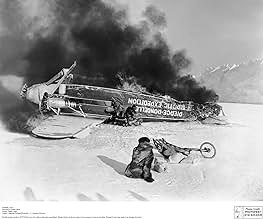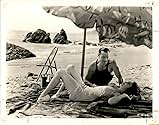Adicionar um enredo no seu idiomaJack Bradon is tasked to reach the South Pole with a dirigible.Jack Bradon is tasked to reach the South Pole with a dirigible.Jack Bradon is tasked to reach the South Pole with a dirigible.
- Direção
- Roteiristas
- Artistas
- Prêmios
- 2 vitórias no total
Emmett Corrigan
- Rear Adm. John S. Martin
- (as Emmet Corrigan)
Richard Alexander
- Radio Operator
- (não creditado)
Bess Flowers
- Party Guest
- (não creditado)
George 'Gabby' Hayes
- Parade Official
- (não creditado)
Edward Hearn
- Admiral's Aide
- (não creditado)
Selmer Jackson
- Lt. Rowland
- (não creditado)
Eddie Kane
- Lakehurst Radio Announcer
- (não creditado)
Kenneth MacDonald
- Lt. Fogarty
- (não creditado)
Adrian Morris
- Dirigible 'Los Angeles' Crewman
- (não creditado)
William H. O'Brien
- Sailor
- (não creditado)
Broderick O'Farrell
- Doctor
- (não creditado)
- Direção
- Roteiristas
- Elenco e equipe completos
- Produção, bilheteria e muito mais no IMDbPro
Avaliações em destaque
Lakehurst, the setting for much of this film was the epicenter of American ballooning and dirigibles, before the second world war and through it as well. A recent book, _They sailed the skies : U.S. Navy balloons and the airship program_ led me to this film, since it represents an easy way to get a look at some of the men and machines in action. Frank "Spig" Wead is the writer and Frank Capra directs. Wead of course was a flyer himself and only turned to writing after a crash broke his neck, crippling him. See WINGS OF EAGLES by John Ford for a dramatization of his life. The early sound era is not known for the sleekness of it's screen story-telling, but if you have interest in the history of zeppelins, or pre-WW2 aviaton, this film is worth watching.
The "7" is strictly for the amazing aerial scenes involving airships or dirigibles (like the Hindenberg that crashed at Lakehurst, N.J.). In fact, all of the aviation moments are skillfully photographed for dramatic effect, especially the fierce electrical storm that destroys one of the dirigibles by pulling it apart in mid-flight.
The romance on the ground is far less convincing than the action sequences involving pilots flying to the South Pole. FAY WRAY is the femme lead, hopelessly in love with hubby RALPH GRAVES and begging his best friend JACK HOLT not to use him on his expedition to the South Pole. She's sick of staying behind and worrying about him and his grandstanding exploits. Unfortunately, none of the domestic scenes between Graves and Wray bear any semblance to reality--her weeping gets pretty tiresome before the plot is resolved.
But FAY WRAY was unquestionably a beautiful woman and director Frank Capra gives her plenty of close-ups. Her role is not particularly well written and she has trouble being anything more than a decorative ploy. RALPH GRAVES is not totally convincing as a reckless pilot. There's an awkwardness about his acting that is somewhat disconcerting here. JACK HOLT handles his role with authority and good screen presence.
A fascinating look at early aviation exploits using dirigibles and balloons when they were seriously considered to be the modern methods of aviation. Well worth watching.
The romance on the ground is far less convincing than the action sequences involving pilots flying to the South Pole. FAY WRAY is the femme lead, hopelessly in love with hubby RALPH GRAVES and begging his best friend JACK HOLT not to use him on his expedition to the South Pole. She's sick of staying behind and worrying about him and his grandstanding exploits. Unfortunately, none of the domestic scenes between Graves and Wray bear any semblance to reality--her weeping gets pretty tiresome before the plot is resolved.
But FAY WRAY was unquestionably a beautiful woman and director Frank Capra gives her plenty of close-ups. Her role is not particularly well written and she has trouble being anything more than a decorative ploy. RALPH GRAVES is not totally convincing as a reckless pilot. There's an awkwardness about his acting that is somewhat disconcerting here. JACK HOLT handles his role with authority and good screen presence.
A fascinating look at early aviation exploits using dirigibles and balloons when they were seriously considered to be the modern methods of aviation. Well worth watching.
This is a must-see film for people like me. I am a history teacher and love aviation and especially dirigibles. Despite how amazingly large and spectacular these airships were, very few films were ever made about them. Here, fortunately, is a homage to America's rather ill-fated dirigible service operated by the US Navy. Additionally, fans of naval aviation will also be thrilled by the airplanes and aircraft carrier (USS Lexington) featured in the film. However, to those out there that could care less about these things, there is little that will interest you about the film--particularly since the romance in the film seems "tacked on" and confusing.
But first, a bit of background. In the 1930s, the Navy purchased some of these airships from the Germans and also made some their own--all of which eventually crashed! Some of this was due to pilot error and some of this was due to the weaknesses of the American designs. So, since the use of these enormous gas-bags was limited to a very short period of time, there just isn't all that much information about them. In hindsight, they were a very cool idea that was already impractical and outdated--at least as far as military use goes. One of the airships in the film (the Pensacola) did not exist, while the Los Angeles was an actual airship.
So back to the film. The aerial sequences are generally quite good and a lot of actual footage was rather seamlessly integrated into the film--in particular, the amazing Aviation Day sequence where two dirigibles and many non-rigid airships fill the screen. Also, while a bit ponderous, the Antarctic scenes were well made and interesting. BUT, the gratuitous romance just got in the way of the film and made no sense. Because Fay Wray loved her husband so much, she wanted to leave him? And then, when he's nearly killed, she calls off her plans to run away with his ex-best friend and returns! It's convoluted and senseless and a major distraction.
But first, a bit of background. In the 1930s, the Navy purchased some of these airships from the Germans and also made some their own--all of which eventually crashed! Some of this was due to pilot error and some of this was due to the weaknesses of the American designs. So, since the use of these enormous gas-bags was limited to a very short period of time, there just isn't all that much information about them. In hindsight, they were a very cool idea that was already impractical and outdated--at least as far as military use goes. One of the airships in the film (the Pensacola) did not exist, while the Los Angeles was an actual airship.
So back to the film. The aerial sequences are generally quite good and a lot of actual footage was rather seamlessly integrated into the film--in particular, the amazing Aviation Day sequence where two dirigibles and many non-rigid airships fill the screen. Also, while a bit ponderous, the Antarctic scenes were well made and interesting. BUT, the gratuitous romance just got in the way of the film and made no sense. Because Fay Wray loved her husband so much, she wanted to leave him? And then, when he's nearly killed, she calls off her plans to run away with his ex-best friend and returns! It's convoluted and senseless and a major distraction.
A reasonably decent motion picture for its time, the one attribute that makes this film stand out from its standard storyline, is its footage and scenes regarding dirigibles. When this film was released in 1931, it was the golden age of zeppelin travel, and the crash of the Hindenburg, which doomed this type of transportation, was still five years in the future. There were numerous scenes shot at Lakehurst Naval Air station, where ironically the Hindenburg crashed, that was the center of dirigible activity at the time for the U.S. Navy. As someone who is interested in this subject, I found this part of the movie fascinating as well as the part of the story that took you behind the scenes of airship travel and how much danger could be involved. The riveting scene dealing with the crash of a dirigible in a violent storm brought to mind the U.S. Navy zeppelin Akron, launched the same year as this film, which was destroyed in a similar storm only two years later. It was also interesting to see actress Fay Wray two years before she would gain fame with her role in King Kong. I had the opportunity to catch this film recently during an airing on the TCM cable channel and would recommend it for anyone with a similar interest.
I liked this film for it conveys a can-do-attitude that was so prevalent in America at that time. This movie was made (1931) in a time when man was just beginning to test the limits of himself, machine, and the elements (it was only 5 years earlier in 1927 that Limbergh crossed the Atlantic in the Spirit of St. Louis.) This movie focused on the race to the south pole and it made for good entertainment. The special effects for the time were very good.
The human interest aspect of the film showed the negative side of ambition (how it affected a marriage and a friendship)this I found interesting. The character development in the one, Frisky, was especially satisfying.
I would recommend this movie to anyone--however do not compare it to the movies of our time--that would be a disservice to the movie.
The human interest aspect of the film showed the negative side of ambition (how it affected a marriage and a friendship)this I found interesting. The character development in the one, Frisky, was especially satisfying.
I would recommend this movie to anyone--however do not compare it to the movies of our time--that would be a disservice to the movie.
Você sabia?
- CuriosidadesThe production was shot during a California heat wave. To form vapor on the breath and give the impression that the pilots were in the Antarctic, the performers were given lumps of 'dry ice' (frozen carbon dioxide) in metal boxes to put in their mouths. Hobart Bosworth found the box cumbersome and simply put the ice in his mouth. He lost his tongue and most of his lower jaw.
- Erros de gravaçãoThe name of this Dirigible was the USS Pensacola but there was already a USN heavy cruiser of the same name that was in service since 1928 when this movie was made. The Navy does not assign duplicate names to ships/air ships in service at the same time.
- ConexõesFeatured in Frank Capra's American Dream (1997)
- Trilhas sonorasAnchors Aweigh
(1906) (uncredited)
Music by Charles A. Zimmerman
Lyrics by Alfred Hart Miles and R. Lovell
Played during the opening credits and often in the score
Sung by guests at a party
Principais escolhas
Faça login para avaliar e ver a lista de recomendações personalizadas
Detalhes
Bilheteria
- Orçamento
- US$ 1.000.000 (estimativa)
- Tempo de duração1 hora 40 minutos
- Cor
Contribua para esta página
Sugerir uma alteração ou adicionar conteúdo ausente






































